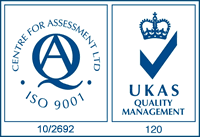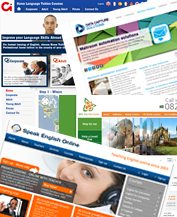Accessible Websites are Good for Business
Article from 2005 (which is still relevant today)
You are already legally required to make your website reasonably accessible to all. From 1st October 1999, the Disability Discrimination Act (DDA) 1995 requires that organisations with a website do not discriminate against certain users. This is an obligation on both the client and the website designer.
And yet many websites are still not visible or navigable to a significant minority of the population. This is ethically not right, and is contrary to the requirements of the DDA. But there is another very good business reason to make your website accessible to all - search engine ranking.
The search engine spiders 'read' your website in a very similar way to partially sighted people, to people who cannot use a mouse or who do not have access to the very latest browser technology. By designing a website that conforms to the DDA, you will also be creating a website that automatically achieves a high ranking in the most important search engines. A high ranking means more visitors, and more business. Therefore making your website accessible is good for business.
This article looks at two common myths about accessible websites, and then gives three of the biggest problems with websites.
There is a myth that accessible websites cost more. If your website is well written then this is untrue. The extra work in creating an accessible website from the design phase is minimal. A more noticeable affect on cost is the probable decrease in maintenance costs.
There is a second myth that accessible websites are impossible with good design. This is also untrue. Websites with Flash intro and other graphics are often some of the most inaccessible. This is historical; many of these websites have been created by designers with an excellent design ability and less interest in programming or accessibility issues. Accessible websites can be very graphical, and can contain Flash or animations. By making such websites accessible to all, they will become visible to the search engine spiders. The most noticeable affect will be a large increase in all website visitors, and not just those who were unable to view your website before.
Three big problems with many websites are:-
- No alternative text for images (screen readers and search engine spiders cannot see the image, so they need some alternative text).
- Navigation that relies solely on the use of a mouse (pull down menus cannot be accessed by some screen readers or search engine spiders).
- Requirements to use the latest browser or even to adjust the graphics resolution of your screen!! users and search engine spiders will not return to these websites.
If you are a client, make sure you request that your web designer produces an accessible website. If you manage your own website, there are many resources on the Internet on how to do this; the WAI (Web Accessibility Initiative) are setting the standards for this, and Bobby is a useful tool for verifying that your webpages are accessible.
Copyright: Dr Rachel Cornish rachel@cornishwebservices.co.uk.














